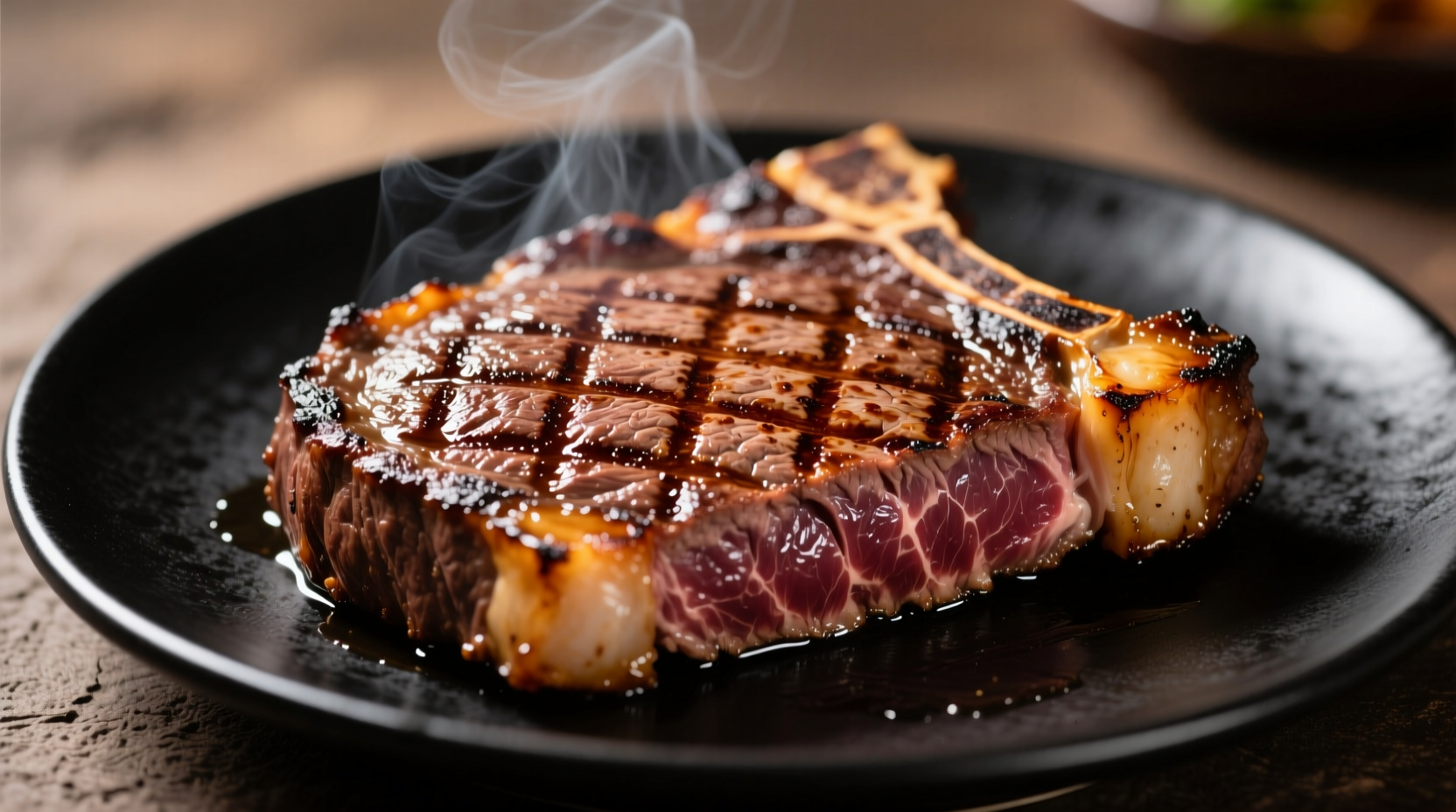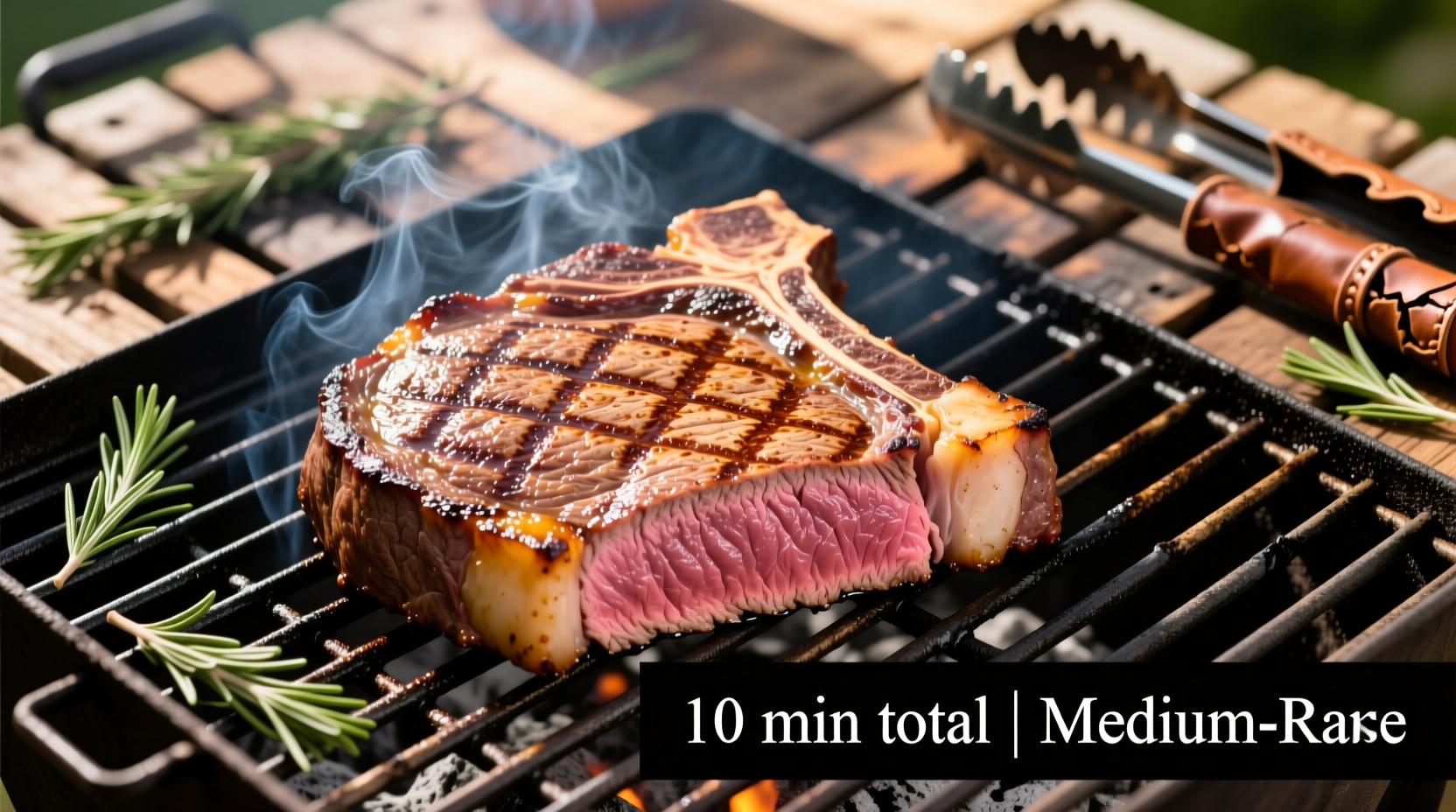The Complete Guide to Grilling Steak: Timing, Temperature & Technique
Nothing beats the satisfaction of perfectly grilled steak with that ideal crust and juicy interior. But getting the timing right can be tricky, especially when variables like steak thickness, grill temperature, and desired doneness come into play. This guide provides the exact cooking times you need, plus professional techniques to ensure steakhouse-quality results every time you fire up the grill.
Why Steak Cooking Times Aren't One-Size-Fits-All
Many home cooks make the mistake of following generic "5 minutes per side" advice, but steak cooking requires precision based on multiple factors. Understanding these variables is crucial for consistent results:
- Steak thickness – A 1-inch steak cooks much faster than a 2-inch cut
- Starting temperature – Cold steak from the fridge needs more time than room-temperature meat
- Grill temperature – High heat (450-500°F) vs medium heat (350-400°F) dramatically affects cooking time
- Cut of meat – Denser cuts like filet mignon cook differently than marbled ribeyes
- Ambient temperature – Grilling on a cold winter day vs hot summer day changes heat dynamics
| Steak Thickness | Rare (120-125°F) | Medium-Rare (130-135°F) | Medium (140-145°F) | Well-Done (155°F+) |
|---|---|---|---|---|
| 1 inch | 3-4 minutes per side | 4-5 minutes per side | 5-6 minutes per side | 7-8 minutes per side |
| 1.5 inches | 4-5 minutes per side | 5-6 minutes per side | 6-7 minutes per side | 8-9 minutes per side |
| 2 inches | 6-7 minutes per side | 7-8 minutes per side | 8-9 minutes per side | 10-12 minutes per side |
Note: These times assume a preheated grill at 450-500°F with steak brought to room temperature before cooking. Always remove steak 5°F below target temperature as carryover cooking will raise internal temperature during resting.
The Professional Grilling Timeline: From Fridge to Plate
Follow this precise sequence for foolproof results. The total process takes 45-60 minutes, but active cooking time is minimal.
Phase 1: Preparation (20-30 Minutes Before Grilling)
- Take steak out of refrigerator 20-30 minutes before cooking to reach room temperature
- Pat steak completely dry with paper towels (critical for proper searing)
- Season generously with coarse salt and freshly ground pepper
- Preheat grill to high heat (450-500°F) with two-zone setup (direct and indirect heat areas)
Phase 2: Direct Heat Cooking (The Critical Sear)
Place steak on hottest part of the grill. For optimal results:
- Do not move steak for first 2-3 minutes to develop proper sear
- Flip only once when steak releases naturally from grates
- Rotate 90° halfway through each side for attractive crosshatch marks
- For thicker cuts (1.5+ inches), use the reverse sear method for more even cooking
Phase 3: Indirect Heat Finishing (For Thicker Steaks)
When internal temperature reaches 10-15°F below target:
- Move steak to cooler side of grill (indirect heat)
- Cover grill and continue cooking until 5°F below target temperature
- Use an instant-read thermometer for accuracy—this is non-negotiable for perfect results
Phase 4: The Essential Resting Period
Many home cooks ruin perfectly grilled steak by cutting too soon. Proper resting is critical:
- Transfer steak to cutting board or warm plate (not back on grill)
- Tent loosely with foil (don't wrap tightly or steam will soften crust)
- Rest for 5-10 minutes (5 min for 1-inch steaks, 10 min for 2-inch+ cuts)
- During resting, internal temperature will rise 5-10°F (carryover cooking)
How to Check Doneness Without a Thermometer
While a meat thermometer is the only reliable method, these visual and tactile cues can help:
- Rare – Cool red center, very soft when pressed (like the base of your thumb when hand is relaxed)
- Medium-rare – Warm red center, soft with slight resistance (like thumb and forefinger touching)
- Medium – Warm pink center, yielding with moderate resistance (like thumb and middle finger touching)
- Well-done – Little or no pink, firm throughout (like thumb and pinky touching)
According to USDA Food Safety guidelines, the minimum safe internal temperature for beef steaks is 145°F with a 3-minute rest time, though most culinary professionals recommend lower temperatures for optimal texture and flavor. The USDA Food Safety and Inspection Service provides detailed guidance on safe cooking temperatures for various meats.
Common Grilling Mistakes That Ruin Steak
Avoid these frequent errors that lead to disappointing results:
- Flipping too often – Prevents proper crust formation; flip only once
- Piercing with fork – Releases precious juices; use tongs for turning
- Ignoring grill hot spots – Move steak to cooler areas if flare-ups occur
- Cutting too soon – Resting allows juices to redistribute; cutting immediately causes juice loss
- Not cleaning grates – Dirty grates cause sticking and uneven cooking
Professional chefs emphasize that the most critical factor for perfect grilled steak is using an accurate instant-read thermometer. The American Culinary Federation recommends the Thermapen or similar high-quality digital thermometers for home use, as they provide readings in 2-3 seconds with 0.5°F accuracy.
Special Considerations for Different Steak Cuts
While the basic timing principles apply to most steaks, certain cuts require special attention:
- Ribeye – Higher fat content means slightly faster cooking; watch for flare-ups
- Filet mignon – Leaner cut; cook to medium-rare maximum to prevent dryness
- Porterhouse/T-bone – Cook with bone side facing hotter part of grill
- Skirt/Flank – Best cooked quickly over high heat to medium-rare
For thicker cuts like tomahawk or cowboy steaks (2+ inches), the reverse sear method produces superior results. This technique, documented by the Culinary Institute of America in their Professional Chef textbook, involves slow-cooking the steak in indirect heat first, then finishing with a high-heat sear. This method prevents the common problem of overcooked exterior with raw interior that often happens with thick steaks using traditional grilling.

Weather and Altitude Considerations
Environmental factors significantly impact grilling times:
- Cold weather – Below 50°F ambient temperature adds 15-25% to cooking time
- High altitude – Above 3,000 feet, water boils at lower temperature, extending cooking times
- Wind – Strong winds can cool grill surface; position grill to block wind
- Humidity – High humidity slightly slows evaporation and cooling of meat surface
According to research from the National Barbecue Association, grilling at high altitudes requires approximately 25% longer cooking times compared to sea level. Their high altitude grilling guide provides specific adjustments for mountain regions.
Perfect Grilled Steak: Putting It All Together
For the best results, follow this simple workflow:
- Remove steak from refrigerator 20-30 minutes before cooking
- Dry thoroughly and season generously
- Preheat grill to 450-500°F with two-zone setup
- Sear over direct heat for recommended time per chart
- Move to indirect heat when 10-15°F below target temperature
- Remove at 5°F below target temperature (carryover cooking will finish the job)
- Rest 5-10 minutes before slicing against the grain
Remember that grill temperatures vary significantly between models and fuel types. Charcoal grills typically provide more intense radiant heat than gas, which affects searing time. The University of Illinois Extension published research showing that charcoal grills can reach surface temperatures 100-150°F higher than gas grills at equivalent settings, which explains why many chefs prefer charcoal for steak.











 浙公网安备
33010002000092号
浙公网安备
33010002000092号 浙B2-20120091-4
浙B2-20120091-4